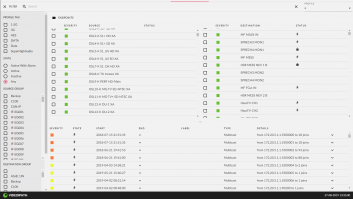2019 is going to be a transformative year – and this transformation is a direct reflection of how current trends are reshaping our industry. However, you don’t need me to tell you what you already know; yes, the media landscape is changing. But in the last year, we’ve not seen industry predictions change. What we’ve seen is the speed of that change accelerate.
The significance of traditional TV is decreasing as consumers are starting to favour on-demand streaming services. SVoD subscriptions have overtaken pay-TV for the first time ever, and nearly 765 million people worldwide are expected to watch content on platforms such as Netflix and Amazon Prime. In addition, by the end of this year, the global OTT market is expected to grow by a staggering 24 per cent. The appetite for OTT services has clearly exploded.
And disruption continues as viewing habits of modern audiences continue to change. Globally, about 20 per cent of content viewed on Netflix is currently accessed through mobile devices, with 20-25 per cent of that viewing happening across mobile networks. And with 5G networks just around the corner, these numbers are only going increase.
But swim up the supply chain and there you will find a big difference as 4K production has become the de facto industry standard, as more and more consumers are demanding 4K content in their own homes. In fact, the Worldwide TV Market Report from Futuresource Consulting highlights 4K UHD TV sets will ship over 80 million this year alone, whilst high dynamic range is present in 60 per cent of those. Content will remain king, with rights owners taking back more control.
So where do we go in 2019?
1. Deeper audience engagement / Consumer-driven change
Mixed reality will continue to be a big area of exploration for content providers as they look to engage audiences at a deeper level – especially around live content. The VR market is quickly transforming into an entertainment and productivity platform, and when we look at the introduction of mixed reality in this last year, we can see why the fastest growing revenue segments will be VR and OTT.
In 2018 we’ve helped customers achieve deeper audience engagement through second screen services; for example, Sony helped Sky and the BBC connect with their audiences in a much deeper way, delivering live sports through VR with PlayStation VR. The success of this shows the demand for unique and personal experiences will continue.
2. Content is emperor! / A rethink of commercial models
As 4K HDR content becomes a demanded de facto benchmark in people’s homes, the width and breadth of quality content will continue to grow. Access to technology that will allow for big budget content in an agile and cost-effective way will open new market players and strengthen partnerships like the Netflix Post Technology Alliance Program which Sony is already proud to be part of.
At the same time, when this is mixed with a change in consumption platforms we will see more non-traditional brands creating content to engage the same audiences that M&E companies are after, meaning the future of content control will sit with the rights owners more so than the traditional commissioning/buying supplier.
3. Streaming services 2.0 / Connected devices and IoT in M&E
With the signs of early introduction of 5G and the move of an industry that will depend on virtualised production and streaming services, mobile connectivity changes what’s possible in terms of the experiences faster broadband will facilitate. And in response, we will see a boom in services offered in this space!
As a rapid growth area now that cloud services and opex models become clear advantages for production speed, cost efficiency and audience reach, more and more productions will benefit from decentralised curation as content can be created, shared, collaborated on, and published from anywhere, anytime. This means teams will be free to work in a more decentralised way, creating advantages, specifically in news production, allowing for more field-based journalism. This will reinstate traditional news providers with the ability to produce and quickly deliver content from wherever it’s happening, supporting the integrity of the brand in the age of ‘fake news’.
4. Data. Data. Data – and the acceleration of AI
As PwC predicts data traffic levels will grow by 22.3 per cent reaching 398 trillion megabytes in 2022, we know that the amount of data produced is going to drive even more insights about audiences, consumption, content and production methodologies. However, the key, and maybe obvious prediction, will be the continued acceleration of how this data will feed more AI adoption across the industry in 2019.
2019 will see the increased use of AI in the content creation side of the supply chain, not only automating more processes and workflows, but used in acquisition and pre-post production to both speed up delivery time across multiple platforms and pre-create content for a desired audience data preference.
5. Knowledge economy / The skills cliff edge is coming!
Finally, 2019 will see the need for knowledge, as a whole range of new roles are required across the industry. The desire for broadcast engineers who understand IT as well as video over IP, who understand digital distribution, who understand multi-platform audiences, is the utopia role many are seeking.
As the industry continues to transition in 2019, associations, bodies and partnerships to not only define standards, but collaborate on knowledge, will be essential. Individual content and media organisations will be looking for partners to consult, support and, very honestly, go on this journey with them together. It’s a transformative horizon ahead, and 2019 will see more new partnerships between media organisations and industry vendors who can offer agile and flexible engagement becoming the norm.







